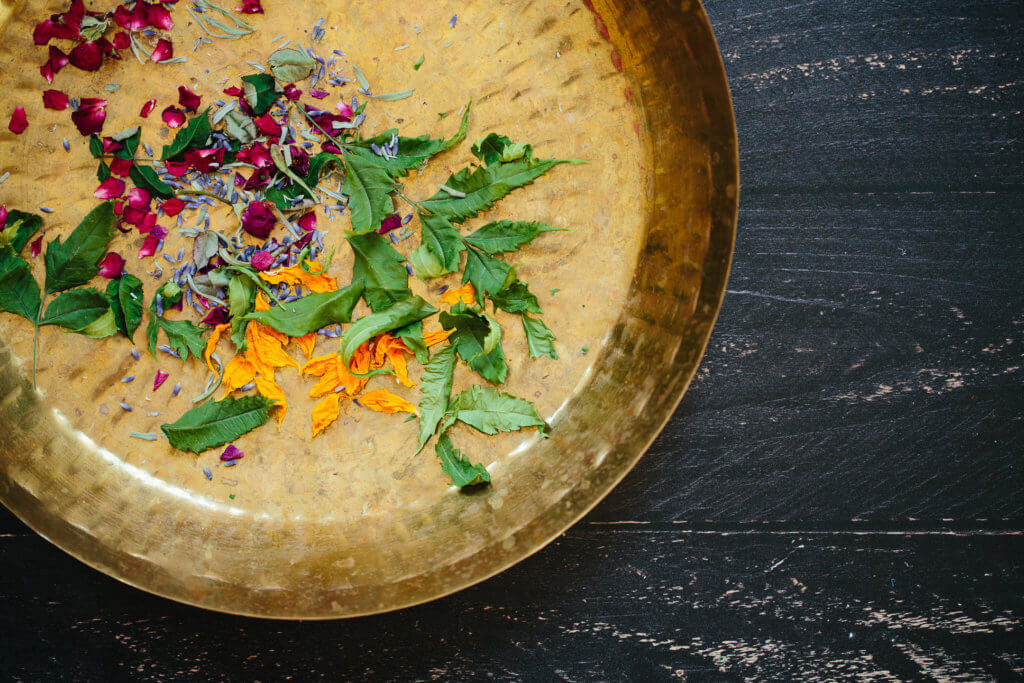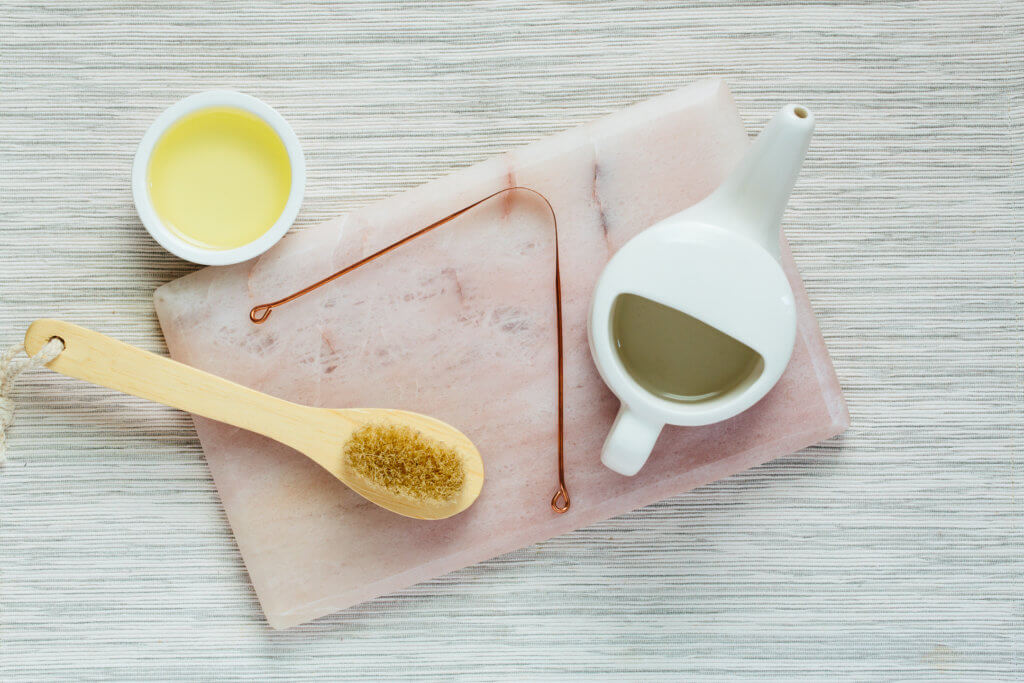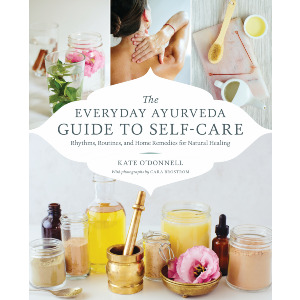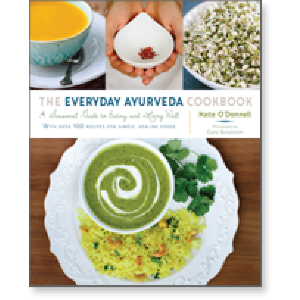
You don’t have to travel to the countryside or a wild, remote place to connect with nature; these Ayurvedic self-care routines will connect you to the nature within yourself.
I used to think of time spent in nature as a way to escape from the pace of modern life; the ultimate self-care. I dreamed of moving out of the city and living closer to nature. A few years ago, I made the move out of the city to the country; this life change shifted my perspective on nature and self-care, but not in the way I expected.
In the country, I live more immersed in nature and the seasons as I go about my days. What I have discovered is that self-care is about an inward return to rhythms—which are bound with nature. It is simple. My body and nature—we are bound together. The same patterns apply to all.
Self-care isn’t something to do, it’s a place of balance to return to, and nature shows us how. Instead of glorifying nature as a destination, I discovered that I have always been a part of it. The qualities of nature are something I can return to in my own body.
Ayurveda teaches us that finding balance in these natural rhythms is the pathway to health. Whether your home is in the city, country, or somewhere in between, connecting with nature as self-care is accessible to anyone, regardless of your current circumstances and resources.
Over the years of working with Kate O’Donnell on the Everyday Ayurveda series of books, I’ve learned so much about Ayurveda and enthusiastically have brought its principles into my own self-study and home Ayurveda practice, now rooted in my rural home. But you don’t have to flee your home in the city to make these changes in your life—here are ways to balance the nature within using Ayurvedic practices of self-care.
Find Your Morning Routine

Every natural being has a morning routine, and you should too.
The birds have one, the bees do too. The bears roam. Grasses collect dew. The first rays of the sun send many creatures to bed, while others wake up. Some flower buds open while others close. Every natural being has a morning routine, and you should too.
In her chapter on dinacharya (daily routine) of The Everyday Ayurveda Guide to Self-Care, O’Donnell offers a comprehensive summary of the cleansing morning routines found in Ayurveda.
One of my beloved morning Ayurvedic practices is the traditional cleansing of the mouth. After tongue scraping, I take a small amount of oil in my mouth and swish it around for 5 to 20 minutes. This is called gandush, or oil pulling. While swishing the oil, I have to stay present with the action (lest I accidentally swallow some) and silent. If my children are already awake it puts a little pause on all of their morning questions as they know I can’t answer yet. I follow the oil swishing with a saltwater gargle (there is a lovely option in the book with added turmeric), and then brush my teeth.
I have a few other routines for my mornings, but I think it’s important that you find what works best for you. “The idea here is to allow your mind to expand rather than attach to the little stuff,” O’Donnell writes about the morning routine.
Practice Seasonal Flow

Self-care is about an inward return to rhythms–which are bound with nature.
While I experienced the seasons when I lived in the city as well, here I find myself much more intimate with the subtleties of seasonal shift. These are the understated transitions; the many phases of winter, the gradual arrival of birdsong in the spring, the winding down of cicadas as autumn slips in, the progression of food that this region will produce at different times–bitter greens in spring, tart blueberries in July, sugared squashes in the fall. Along with a daily rhythm shored up by my morning routine, I also have a stronger seasonal rhythm, what Ayurveda calls ritucharya (seasonal flow).
“Historically, people paid close attention to the seasons for agriculture. . . . The knowledge of environmental changes and how they affect us is a bit of a lost art, but it is something that can benefit modern folks in very practical ways,” O’Donnell writes. Undoubtedly modern lives can benefit from awareness of the seasons, and you don’t have to live immersed in nature to get started. I have found that my number one way to sync up with the seasons is through the food I eat.
We all eat every day, and changes in the weather and the environment have a big influence on our appetites and bodies. Learning what foods are in season in your area and how to prepare them is a great place to start. For recipes, seasonal shopping lists, and a deeper dive into how your personal constitution interacts with the seasons, The Everyday Ayurveda Cookbook: A Seasonal Guide to Living and Eating Well is a great resource.
Click to read “An Ayurvedic Picnic from The Everyday Ayurveda Cookbook” for a few of my favorite seasonal recipes.
Be Present with Nature

Self-care isn’t something to do, it’s a place of balance to return to and nature shows us how.
I was introduced to the concept of sattva when I photographed Everyday Ayurveda Cooking for a Calm, Clear Mind. In this book, O’Donnell defines Sattva as “the state in which the mind expands beyond all the daily chatter—worry, stress, chores, the ‘small stuff.’” She goes on to describe activities that promote sattva; many of which are contemplative practices and spending time in nature.
One of my favorite Ayurvedic practices for connecting with nature is one I came upon by accident; moon bathing. Like sunbathing, the art of moon bathing is intentionally spending time exposed to the light of the moon.
There are no streetlights where I live, and this absence of artificial light means that when the moon is full, it is bright. The quality of the moonlight is distinctly cool and silvery, almost crystalline. Moonlight is cooling, yet revitalizing. When the new moon comes around, it is notably dark—so dark that when I first left the city it took a few months for my eyes to become sensitive enough to find my way through a darkened room.
Over the course of my first year in the country, this contrast made me more aware of the moon’s cycles. This awareness wasn’t based around a calendar or a device, but observed and understood by all of my senses. As the full moon approached, I spent more time in the moonlight. With intentional and direct exposure to the moonlight, I found more of a connection to the monthly cycles of nature of which I am a part. While anyone can benefit from this practice, the effects of moon bathing are uniquely notable to people who menstruate.
Nature is not a place you go to. It is a place that lives in you. When you bring your full attention to the natural phenomena around and within you, your body is able to recognize the rhythms of the days and the seasons that empower you and your pathway to health.

Share
Related Books
The Everyday Ayurveda Guide to Self-Care
$29.95 - Paperback
Everyday Ayurveda Cooking for a Calm, Clear Mind
$29.95 - Paperback
The Everyday Ayurveda Cookbook
$29.95 - Paperback

Cara Brostrom is the stylist and photographer for the Everyday Ayurveda Cookbook, Everyday Ayurveda Cooking for a Calm, Clear Mind, and the Everyday Ayurveda Guide to Self-Care. She lives in Western Massachusetts. http://www.carabrostrom.com/





